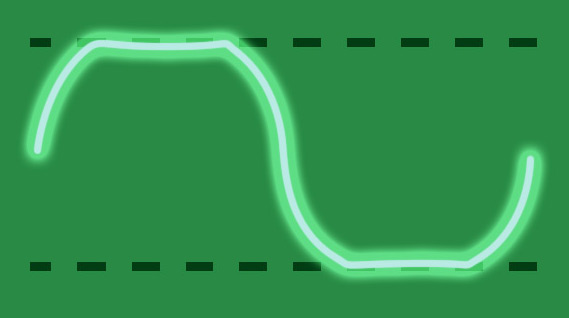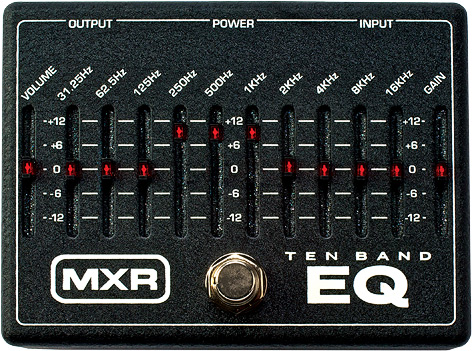
All the besserung to see you with
Digital is amazing!

It’s technology! I mean, the US intelligence community relied almost exclusively on electronic intelligence gathering for the last fifty years and successfully predicted…um, beep beep boop beep!
I actually like a lot of digital stuff, especially as it involves keeping everything with me at all times, and thus being able to reference the failures of the post U2 CIA. The best example is my ‘we’ve never had a bigger iTunes library in our store; it took 4 minutes just to boot’ iTunes library. Despite the erstwhile Mr. Tom Waits, I prefer digital music. But this is because, despite what all the analog heads will tell you, it is indistinguishable from its analog counterpart.
‘But Tom Waits…’, you protest. Tom Waits lied. He’s a liar. That’s why his lyrics are so dwarf tossin’, whore double-crossin’, ethos-lickin’ good.
Now I’m sure some idiot evolutionarian will explain that our sight is very good and our hearing is just so-so because on the Savannah plains, Jesus would be better able to see dinosaurs rather than hear them, and somehow this helped Him make their bones disappear. But the fact remains, our hearing just isn’t that good, and our sight is. The following won’t make any sense to you, so just parrot it back when you need to if someone asks: we can only hear sounds between 20 Hz and 20,000 Hz. Hz (hertz) refers to the vibrations per second. If something vibrates 20 times a second, it is a low frequency tone, like the kind that Dr. Dre, PhD, tells you his headphones deliver in place of, say, accurately reproducing sound.
Please, please, don’t buy Beats headphones. They are the Transformers of sound reproduction. Crap, now you’re going to buy them, aren’t you? Dr. Dre, you owe me a research grant.
Back to whathaveyou, if something vibrates at 20,000 Hz, we generally can’t hear it, since as we get older (say, past six months), the high end of our hearing goes. Then there’s all those sounds in between, that the kids call rap-emo-baroque. What matters is that we’re totally not at all like that other band.
Don’t label us!
What the makers of CDs did before you were born, and after I was a great grandfather six times over, was actually very smart. They over engineered the problem. They created a digital version of a soundwave at double what we could hear. Why did they do that? It’s because of a phenomenon called ‘saw-toothing’. A pure sound wave looks like this:
If you run it through a bad amp, or, better yet, a Shin-ei Companion (look it up!), the loud parts of the wave (the amplitude) can’t get through, causing the top roundy parts to square off.
If you’re playing a cover of ‘Feelin’ Groovy’, the effect is awesome. However, if you’re trying to reproduce music, it’s as ugly as, say, anything projected in digital. That perfect looking sine wave would look like this:
CDs actually solved this problem in a classical Victorian way. They overengineered it. Why use complex calculation, when you can just make the bridge forty feet thick and kill a bunch of annoying workers in the process? In the case of CDs, instead of compromising, they dealt with this problem by making so detailed that you can’t hear the sawtoothing. Close up, CD sound that looks like:
Farther back:
which means farther back.
Nice.
The point of all this over engineering is that CD sound is actually, from a physiological point of view, indistinguishable from analog. This has been proved, time and again, is various double blind tests, but like 9/11 conspiracies and dinosaur Jesus, this doesn’t stop people from believing it. When you say ‘turntables just sound better’, it’s true to a point, but this is because of the tone they generate. Music that runs through them is filtered, with various bandwidths dropped down, and others amplified, creating that warm sound, an adjective you would avoid in any other context. But didn’t I just say that you couldn’t tell the difference.
Okay. Let’s start again. This will actually tie up with IMAX later, but more importantly imbue with snobbery in an entirely different category. What I showed you before is a sine wave. It’s a pure tone, kind of sounds like a bell:
What actual complex sound, like voices and music and so forth, looks is more like this:
Weirdly, this is actually the combination of between say ten and a thousand pure tones, so it’s really a bunch of sine waves, broken down like this,
The super squiggly wave is a high tone, medium squiggly is middle, low squiggly is low, the notes that make Dr. Dre’s headphones so terrible. Sometimes you’ll see it in your car, represented in treble and bass, and sometimes on a graphic equalizer, like so.
What a turntable does naturally is alter the recorded sound by raising the mid tones, like so.
There is also that annoying low level hiss, which you love, and I bought the first George Michael CD specifically to avoid. There is nothing like the utter digital silence of the drop before ‘Bay-bay’ on ‘Faith’.
That’s my taste in music. Given the films I chose, couldn’t you have guessed?
Digital sound is better than analog. You cannot tell the difference; it is beyond your physiological abilities. This is because you’re not an adorable dachshund. There are a lot of problems having to do with your not being an adorable dachshund. You can make perfect digital music sound like your record player if you want. There’s a series of very expensive filters that do exactly that. They cost about as much as the maintenance of a record collection.
Why I’m talking about these various tones and frequencies here, is that what AM radio did at the time of its invention was make use of the limited bandwidth, and cut out the high and low frequencies, like so.
You could still get the gist of the tune, but it sounded like crap. And, in living it in reverse chronological order, like Star Trek/Wars films whose technology gets better the pre-quelly you go, this is what the makers of DLP did after you lost your virginity and I was aging backwards. In this case, they underengineered the problem. As with the bridge, subway, computer, road and home builders of today, they did the least they could do and got away with it. Sadly when it came time to digitize film twenty years later, there was a problem: our eyes weren’t as inaccurate and easy to fool as our ears. Capitalism wisely sidestepped this by simple telling everyone it was digital, and consumers accepted this by simply being lazy and not noticing. Hey, you still can’t tell the difference between IMAX, DLP and 35mm unless you have someone like me telling you. What the hell did you expect?
And so, depressingly, also those beard loving technophobes are actually correct: film is better than digital. This isn’t just a question of size; we’ve already dealt with the way in which IMAX is better size wise, as well as every permutation of phrase that follows the use of the term ‘size-wise’. The second problem with digital image is less obvious, and this is the problem of the grid. Like with the sawtoothing issue for CDs, the limits of technology mean that digital projection must be in a series of squares. This would be fine if all of nature was two dimensional and there was no such thing as perspective. Film is actually a chemical process, so the things that capture light are blobs of chemicals, randomly distributed, which isn’t accurate, but at least tends to be closer to what our eye receptor thingies see than a grid. Since nature inconveniences capitalism by being all fractally (why am I blaming capitalism so much today? Maybe it’s so I won’t feel bad when I talk about how stupid Marxists are), you get funky interference called Moire patterns.
You can look it up or not, but it was really obvious in the early stuff, like Episode 1. It’s now less so because they fixed the problem. Well, maybe ‘fixed’ isn’t the right word. What they did do, instead of making the cameras or projectors better, is punched holes in the screen, meaning you’re technically getting even less information. Next time you go to the cinema, check it out. They’re there. If you want to see the difference, go to cinema 6 at the UGC Champs Elysees, in which they have not perforated the screen. It’s super ugly, even if you’re seeing Lay the Favorite.
Then leave Paris without seeing or doing anything else to prove how death metal you are.
Even with these holes, you can still see Moire patterns when they show bright titles on a dark background, which are very hard to represent on a grid without anti-aliasing. What the hell does that mean? It doesn’t matter. Say it to bore your friends. Titles look bad.
This is usually fine, because very little in life is purely black or white. Which is a statement that I rhetorically regret much more than any dick joke.
And still, it gets worse. CDs operate at 44Mhz but they also work on amplitude, or how big the wave goes up and down. This is a factor of what is called bit depth, usually from 8bit to as high as 24bit. This is harder to hear than changes in tone and even the effects from saw-toothing, but you could hear it if it was, say 1 bit. That would mean that even if the resolution was great at 44Mhz, the difference between loud and quiet would be so small you would get another kind of distortion, like trying to crank up a whisper. Like all technological deficiencies, great for garage music, but only if you are recording the deficiencies with really expensive modern equipment that isn’t deficient. And a $1200 off eBay vintage fuzzmaster. Deficiency doesn’t come cheap. Just ask instagram. Actually ask facebook about instagram.
Bit depth is much more noticeable in digital video, where it is, oddly, called bit depth. In this case, bit depth is measured from color to color, so 8 bits gives you 256, 16 bit 65536, and 24 bit 16,777,216. 16,777,216, sez you, that’s like a million! It kinda is, but it has two additional problems. It has to be represented by either three colors, which means that some colors simply can’t be represented. I mean look at this:
That should be a totally different color! I would show you here, but I can’t. You’re reading this on a computer which very literally cannot show the colors I’m talking about. So I’ll just rebuild the physical film industry, buy some film, rebuild the film camera industry, film it, rebuild the film processing industry, and then…email it to you.
In fact, the combination of red, green and blue does okay in capturing color, especially at these high rates. It’s the same process that film uses, though film is ‘rated’ around 30 bits, which is also like a million. Nitrate in film, or whatever chemical they’re using these days, can only go from dark to light. So color film is actually saturated with three chemicals, each which are designed to filter out red, green and blue respectively. It’s pretty cool, but not as cool as technicolor, which ‘solved’ this problem by shooting three strips of film simultaneously and processing them together. The cameras, and I think there are six left, are as big as a processor farm that would simulate about half the colors.
So some colors are missed out on, and fine. Who likes color? But the real missing bit is within the pure blacks, greys and whites. Black and white film, which doesn’t have three chemicals, but one, can capture a fairly wide spectrum. Color film means that the blacks, greys and whites are actually the combination of three colors. This is usually fine, because very little in life is purely black or white. Which is a statement that I rhetorically regret much more than any dick joke.
Anyway, when it comes to digital, this is a problem because they simply ran out of bit depth, something that film can’t do. Like with the IMAX problem, your lowest bit depth is the weakest link in the chain, be it camera or projector (the computers that process or at least edit film are around 24-bit, so if you shoot things with a 10 or 12 bit camera, or project with a 10 or 12 bit projector (like, I said, without any knowledge, and possibly libelously, the projectors at the Dukes @ Komedia, which are unspeakably ugly).
The other problem is more personal, to me anyway. It’s not that I love black and white film, though I do love many black and white films. They’re fine, color is fine. The personal part is the way in which people shoot black and white as if it’s color, made doubly worse by the way in which people shoot video as if it’s film. There is a significant lack of care within the image part of point and shoot, and with the obvious exceptions of the Mr. Deakins, Mlle. Godard’s, Mssr. Debie and Mssr. Dupieux’s of the world, they just press the on button, and then strip the color information. Which would be only be fine and annoying if it wasn’t for bit depth. Because black and white reproduces okay, but only within a certain range of grey.
When you get down to the semi-shadows and hints of light, it gets blotchy and fast. I could lie and say it looks like this:
But it really looks like this.
That means anything subtle, or dark, is just going to disappear, literally as it is transferred to digital and lost forever. Look at the usually competent Mr. Jeff Cronenweth, who shot Fight Club on film, and the recent Gone Girl on video. One is beautiful and allows for things to take place in the half light; the other merely puts quotes around the idea of night, which I guess means we’ve entered the age of night-for-night. This usually hard to spot in even a Willisian shot, so here’s a nice screen grab of Sois belle et tais-toi, not of the mise-en-scene, so to parler, but the fade outs.
When you fade in film, there are more than enough low-end greys to capture the whole experience. You can also spot this when there’s a gradient fade from a flashlight or what have you. This is what happens with the combination of low bit depth, and placing the bit depth entirely within three colors. You’ve seen those blotches before, and you will see them again. At least until it gets better.
Which, oddly it could. Because here’s the sad part. Technology, as you may have heard is advancing. They could make a digital camera and projection system that’s actually better than IMAX. Right now. Japanese TV and BBC have been experimenting with 8K cameras with a high bit depth, and the Hassenblad digital still is getting close in both plate size and pixel definition to IMAX film, currently around 50 MP. Still not there, but better that the 1.4MP you’re watching now. Whether or not this can be adapted to moving images, I have no idea. I don’t know anything about technology. I only know that if any nerds were reading this, half of them would strenuously disagree with me, and the other half would disagree with them, but somehow manage still not to agree with me. The enemy of my enemy is basically still kind of a dick.
What I might have expected is what has been happening throughout history; people sell lousy technology, tell us it’s great, then build something better and sell that. Fine. Without money, this stuff wouldn’t exist (okay Capitalists? Okay). And I would rant impatiently and complainingly even if it was actually better than film. Which someday it may be.
But I suspect this is not our future. It’s just easier to stick with the weak unreal images and be told that they’re wonderful. Think of all the money you save to spend on people telling you this. What’s my evidence of this somewhat cynical perspective? The one introduction to the film canon that just won’t seem to die, despite the fact that everyone hates it. Yes, that’s right. It’s time for my rant on 3D.
And yes, time is, naturally enough, loosely defined enough that it’s not written yet. Then again, you may be reading this years from now, when I’ve finished the other article, in which case the loose definition of time is somewhat appropriate. You’ll know that time has passed,
![]()
The Lonely Comments Section

 [logo]
[logo]
















